

CANNABIS THE RENAISSANCE



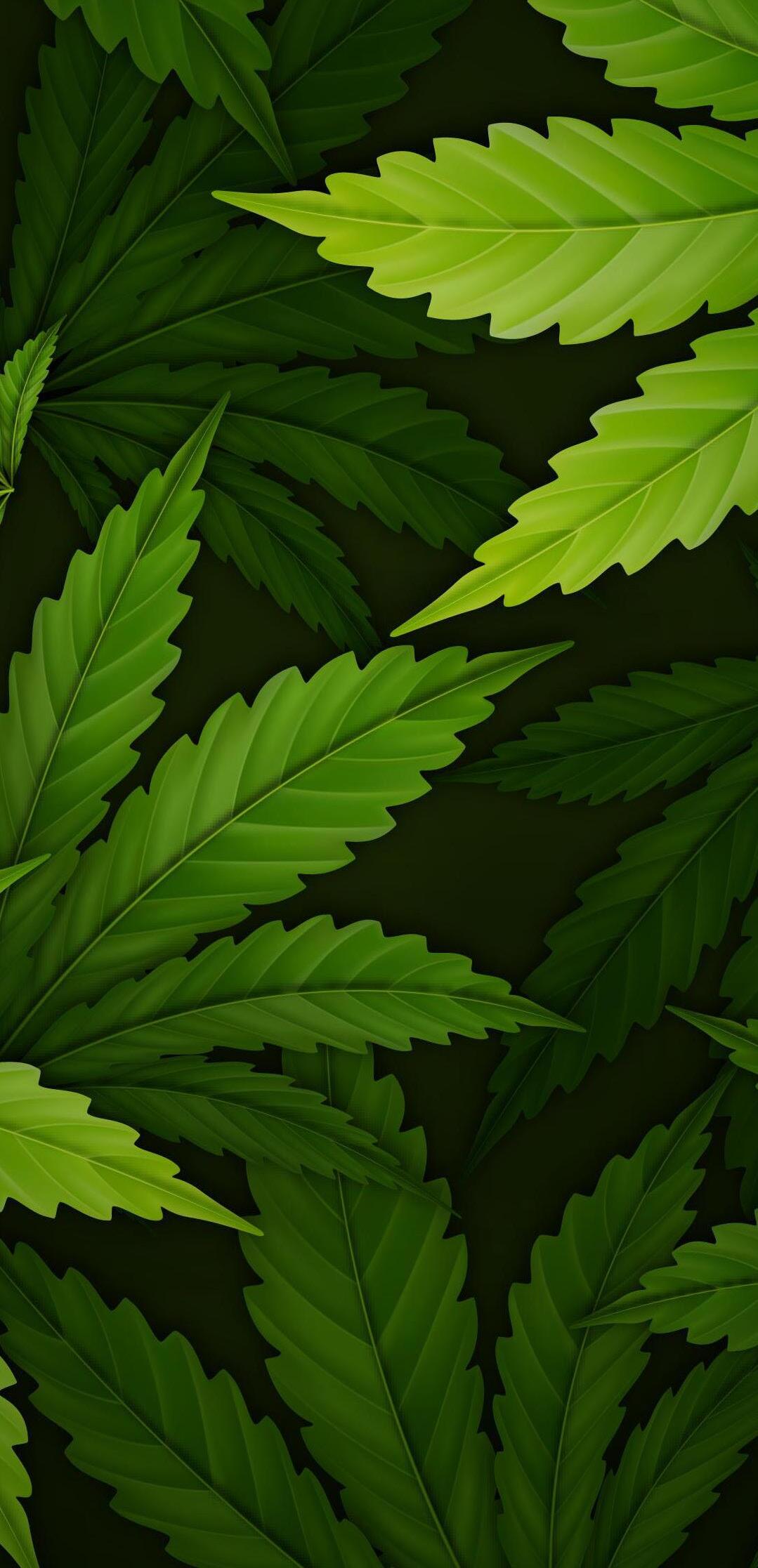
TABLE OF CONTENTS
4-7
CANNABIS IN ART & CULTURE
Article: Cannabis Americana: A Historical Journey
12-15
COMMUNITY STORIES
Article: Couchlock: The Science of Relaxation
CANNABIS & CULINARY
Article: The Art of Cannabis Cuisine
8-11
CANNABIS IN HEALTH & WELLNESS
Article: Alleviate Stress the Cannabis Way
16-19
22 VOICES OF THE MOVEMENT
Article: Cannabis and the Law: What You Need to Know
MEET THE TEAM MESSAGE FROM THE CEO
Dear Reader,
STAFF
Anthony W. Gaines II {Visionary Leader}
Editor-In-Chief
Breanna Bates {Cultural Alchemist}
Managing Editor
William Baldon {Visual Storyteller} Media Director
Terrence Fairbanks {Brand Champion} Sales Director



CONTRIBUTORS
Chef Linda Berry {Culinary Artisan}
Contributing Writer
Alante Gaines, LPCA, MA {Mindful Mentor}
Contributing Writer
Kristyn Robinson {Historical Navigator}
Contributing Writer
Tim Johnson {Legislative Luminary}
Contributing Writer
Pam Chmiel {Cannabis Journalist}
Contributing Writer
As we embark on this exciting journey with OH-HighYo! Magazine, I am filled with a profound sense of gratitude and purpose. At Gaines Media Company, our mission has always been to spark meaningful conversations, inspire curiosity, and foster connections within our communities. With OHYM, we now have the opportunity to do just that—and so much more.
We stand at the forefront of a Cannabis Renaissance—an era of rediscovery, innovation, and cultural transformation. OH-HighYo! Magazine is more than just a publication; it is a movement dedicated to educating, empowering, and redefining cannabis culture. This magazine isn’t just about cannabis; it’s about breaking down barriers, challenging outdated stereotypes, and amplifying the voices that deserve to be heard.
As CEO of Gaines Media Company, I am committed to ensuring that OH-HighYo! Magazine serves as a platform for positive change and progress. Whether through thought-provoking articles, captivating visuals, or engaging community events, our goal is to ignite new perspectives and create a space where cannabis, culture, and creativity thrive together.
But beyond that, OHYM is a reflection of our values as a company—Integrity, Inclusivity, and Innovation. We believe in the power of storytelling to inspire, educate, and unite. We believe in creating spaces where everyone feels welcome, valued, and respected. And we believe in pushing boundaries, embracing challenges, and continuously evolving to better serve our community.
So, as you flip through the pages of OH-HighYo! Magazine, I invite you to join us on this journey of exploration, discovery, and transformation. Together, we are writing the next chapter of this Cannabis Renaissance—one that champions education, advocacy, and progress.
Let’s spark the conversations that will shape the future. Thank you for being part of our story.
Warm Regards, Anthony Gaines CEO & Founder, OH-HighYo! Magazine

A BUYER’S GUIDE TO CANNABIS EDIBLES: What
to Expect from Different Types

Cannabis edibles have gained popularity as a discreet and long-lasting alternative to smok—ing or vaping. With a variety of popular items like gummies, baked goods, drinks, and candies on the market, understanding how these different types of edibles affect your body is the key to enjoying the experience.
The following guide gives a brief overview of how our bodies absorb cannabinoids like THC and CBD, depending on how we consume them.


Popular types of Edibles
Gummies:
Gummies are a popular option due to their convenience, flavor, and dosing. They are ideal for many beginners. Although convenient, gummies can take 30 minutes to 2 hours to kick in because they pass through the digestive system. The effects usually last 4-6 hours with overconsumption generally lasting longer.
Baked Goods:
Classic edibles like brownies and cookies are well-loved but can be tricky due to their richness and variability in potency. Like gummies, they must pass through the digestive tract, leading to delayed effects but longer-lasting relief. It’s advised to start with a small portion to avoid overconsumption, especially if you are unsure of the dosage.
Drinks:
Cannabis-infused beverages are absorbed faster than solid edibles because some cannabinoids are absorbed through the mouth’s lining. Effects can set in within 15-45 minutes and last several hours, making drinks a good middle ground for quicker effects while still offering sustained relief.
Hard Candies and Lozenges:
These sublingual edibles are absorbed directly into the bloodstream through tissues in the mouth, leading to quicker onset times of 15-30 minutes and higher bioavailability than food-based edibles. They provide steady, mild effects and are ideal for controlled dosing.
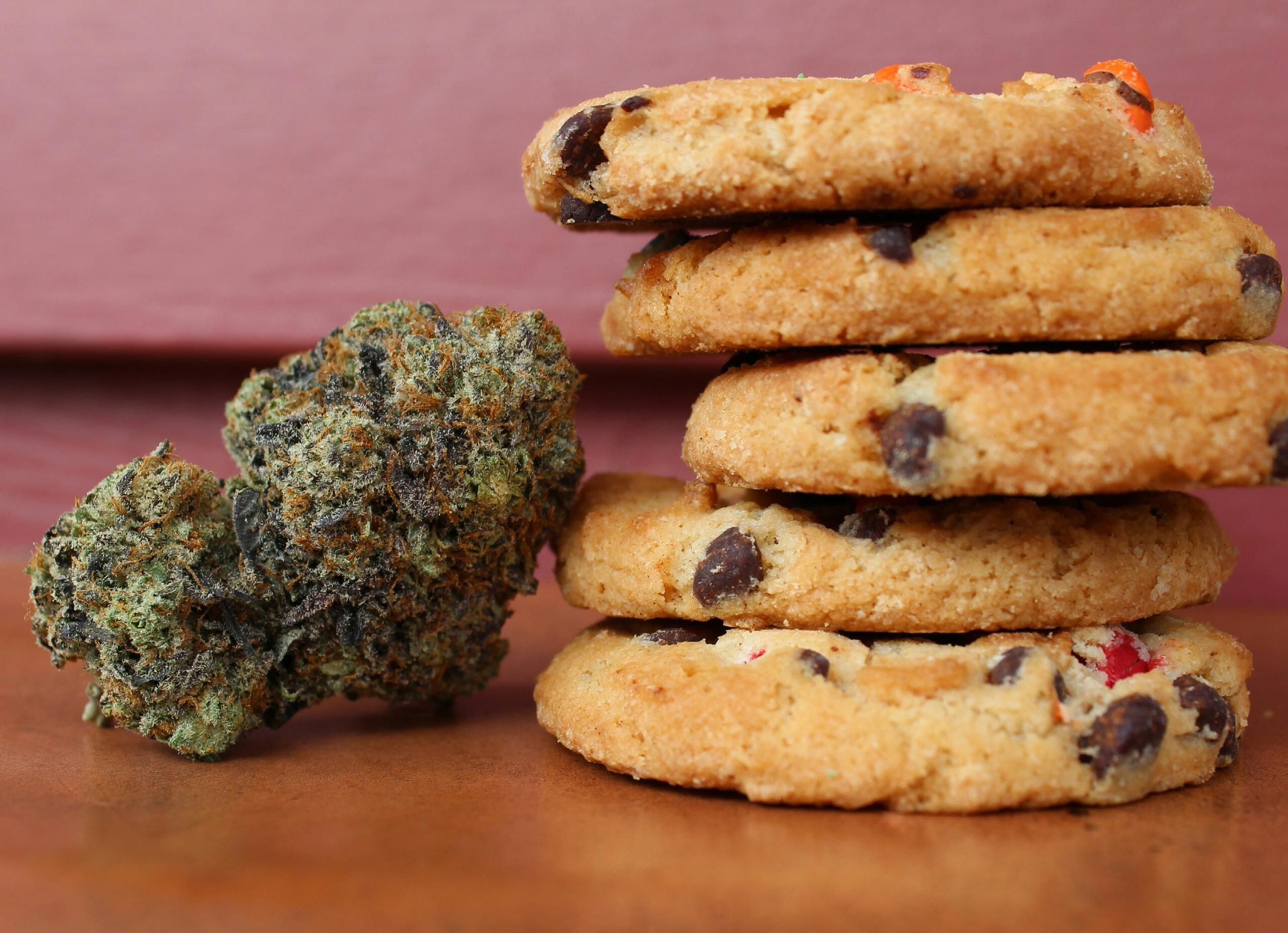







Potency, Bioavailability, and Dosing
The potency of edibles is influenced by their bioavailability—the amount of cannabinoids that enter the bloodstream. Because edibles like gummies and baked goods are metabolized through the digestive system and liver (first-pass metabolism), their bioavailability is low, around 4-20%. This means you may need a higher dosage to achieve the desired effects. For example, if you eat a 10 mg THC brownie, only 1-2 mg may actually reach your bloodstream.
Beverages and sublinguals (like hard candies) have higher bioavailability because they bypass some or all of the digestive system. This allows for quicker absorption and more potent effects. For these types of edibles, a smaller dosage can often achieve the same results as a higher dose of food-based edibles. For instance, a 5 mg THC beverage might feel more potent than a 10 mg THC brownie.
Why Dosages Vary by Method
The potency of edibles is influenced by their bioavailability—the amount of cannabinoids that enter the bloodstream. Because edibles like gummies and baked goods are metabolized through the digestive system and liver (first-pass metabolism), their bioavailability is low, around 4-20%. This means you may need a higher dosage to achieve the desired effects. For example, if you eat a 10 mg THC brownie, only 1-2 mg may actually reach your bloodstream.
Beverages and sublinguals (like hard candies) have higher bioavailability because they bypass some or all of the digestive system. This allows for quicker absorption and more potent effects. For these types of edibles, a smaller dosage can often achieve the same results as a higher dose of food-based edibles. For instance, a 5 mg THC beverage might feel more potent than a 10 mg THC brownie.
Chef Linda Berry is a cannabis chef, speaker, instructor at The Cleveland School of Cannabis and cofounder of Luminary Cafe, a cannabis lifestyle brand. She’s dedicated the last eight years to traveling around the country cooking for events and teaching chefs and students how to safely and accurately incorporate cannabis in to food.
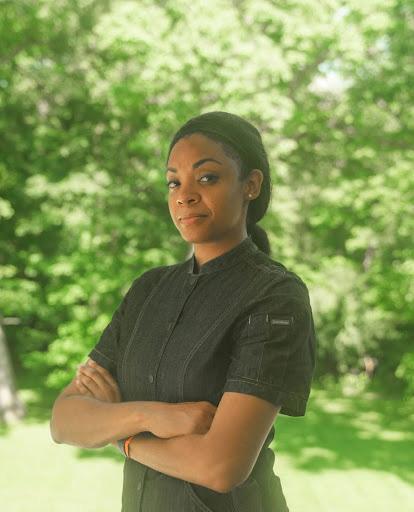


The History of Cannabis in America
PART 1 THE END OF THE HEMPIRE
The Beginning of the Hempire
Cannabis sativa L. (hemp) and its sister, Cannabis indica have a long, intertwined history with humanity, going back ten thousand years. These plants have co-evolved by means of human agriculture and genetic selection, From its earliest reference in China, where it was used as medicine, fiber and for its abundant nutritious seed, to its first introduction to the Americas, the plant has been selected for its many useful qualities as it spread around the world. Neither variety is native to the Americas, they were introduced at different times from different places in the world and for different uses.
European explorers discovered the New World, sailing across the Atlantic Ocean in ships with sails and ropes made of hemp. Cannabis sativa L., hemp, was introduced by explorers in Chile in the early 1500’s. Hemp was a useful plant, grown throughout Europe, for its tall fibrous stalks. Hemp was a necessity in the shipping industry. It was used for canvas sails, tarps, ropes, twine, and oakum, a plug of hemp fiber dipped in tar and stuffed between the shipboards to make ships and boats water tight.
Hemp seed was traded and it spread across the Americas as part of the Colombian Exchange between the Old World, the New World and West Africa in the 16th Century. The tradition of smoking Cannabis flowers through a pipe was brought from West Africa to the Americas during this exchange of people, culture, ideas, technology, language, plants, animals and diseases.
Hemp in the New World 1605-1776
The story of hemp is woven into American history, hemp plays a central role in many of our stories, however, the hemp part of the narrative has been hidden. In the New England colonies, in 1605, the first pilgrims in Jamestown, VA found the indigenous people harvesting hemp and planted their own
first hemp crop the following year. Hemp was a valuable part of the economy, and the Royal Navy needed a steady supply of hemp to outfit the ships sailing across the Atlantic. King James eventually decreed that all landowners in the colonies shall grow at least 100 plants of hemp for export, first in Virginia, and later in Connecticut and Massachusetts. Hemp became a commodity, if a farmer could grow it, they could sell it, they could use it to pay debt or taxes or to buy provisions like sugar and tea.
As the New England colonies grew, shipping and shipbuilding became a major venture of the coastal cities engaged in the Triangle Trade between America, Europe and West Africa. Hemp industries like ropewalks and canvas mills were a common part of the growing cities. The Boston Massacre, a fight that happened between British soldiers and workers in the ropewalk, near the Boston shipyards, ultimately ended in the death of several ropewalk workers including Crispus Attucks. This was a precursor to the Boston Tea Party, as tensions were escalating toward Revolution.
American Revolution - Civil War 1776-1865
We’ve all heard the stories of the founding fathers writing the drafts of the Declaration of Independence and the Constitution on hemp paper, and the lore of the leaders of our young country who grew hemp, George Washington, John Adams, Thomas Jefferson. Jefferson grew and documented hemp crops in his farm logs at Monticello. He even designed a novel hemp brake, a tool used on the farm to separate the fiber from the hurd (the pithy inner stem of the hemp stalk). All landowners grew hemp. Hemp and flax were part of the garden plot, everyone needed them. Betsy Ross sewed the first flag of our new country, Stars and Stripes, made of humble hemp cloth. Benjamin Franklin’s kite string from his infamous lightning storm experiment was made of hemp.

Pennsylvania was an early leader in hemp production. Ropes and sails were needed for the ships built in the port city of Philadelphia, and Conestoga, PA was known for creating the iconic covered wagons for families headed west. Lancaster, PA was known for its oilseed mills, using large rounded mill stones like a giant pestle to crush both seed for oil and stalks for fiber. Oil was used for lamps, paints and varnishes, and lubrication. Ray Stark, Pennsylvania hemp historian, has documented the historic wills of gentlemen from PA, who provide for their widows to have ‘all the hackled* hemp she can spin’.
*to hackle, to comb
Hemp was such an important part of the growth of the country, but it was labor intensive. Kentucky became a major force in the hemp industry. Eli Whitney created the Cotton Gin in 1793, making cotton easier to harvest and process than hemp or flax and cotton became the staple crop for making fabric. Hemp was still used to make bags, twine and ropes for picking, bailing and transporting cotton. All of this economy was created with slave labor, building wealth in the American south.
In his first association with slavery, Abraham Linclon was visiting his childhood friend, Joshua Speed at his family’s hemp plantation in Farmington, KY. Soon afterwards, traveling by paddle boat on the Mississippi River, Lincoln witnessed men shackled together ‘like fish on a line’ being transported for the slave trade. Lincloln later told his friend, Speed, that this sight had never left him as he reflected on the meaning of freedom and liberty. The Emancipation Proclamation even has hemp leaves in its design, showing the significance of hemp to Lincoln’s outlook on slavery.
Death by A Thousand Cuts 1865-1937
After the Civil War, labor was not so cheap, the labor pool that had brought wealth to the southern states was on the move, heading north seeking the promise of jobs and it was hard to keep skilled workers doing the hard work in the hemp fields and ropewalks. Exotic bast fibers such as jute and Manila hemp were introduced from the Philippines, India, Africa. Manila hemp and even hemp from Russia was cheaper to produce and import than American grown hemp.
The National Cordage Company expanded its holdings in 1887, acquiring its biggest competitor, the Boston Cordage Company. The NCC had a near monopoly on cordage production, and control of the natural materials markets. In 1893, the failure of the NCC led to the Panic of 1893, one of a series of financial crises leading up to the Great Depression. This had an effect on farmers and hemp producers as well as in the shipping industry and domestic rope production.
Advances in technology were changing the landscape. Wagon trains were replaced by steam engines and the intercontinental railroad. Sailing ships made way for steam ships, and ropes were replaced by steel cables, and eventually DuPont’s new invention, nylon.
Hemp was still being grown on small farms across the United States. Kentucky continued to produce hemp and was a major source of hemp seed used in production of hemp in northern states, where the season is too short to produce viable seed. Farmers in Michigan, Missouri, South Dakota, California tried creating successful hemp industries, making twines, string, ropes, rugs, hemp plastics and even attempting large scale paper production for the newspaper industry. Hemp production became most successful using a model requiring a lot of acreage, using crop rotation, involving many farms and a central processing facility. Wisconsin and Minnesota both had co-op farm communities committed to growing and processing hemp all the way up until the Marijuana Tax Act of 1937 was enacted by the United States Congress. Matt Renz, the Hemp King of Wisconsin, continued processing and producing industrial hemp until after World War II.
Industrial hemp is low in THC, but that didn’t stop Harry Anslinger of the Federal Bureau of Narcotics from setting his sights on eliminating hemp, as well as the medicinal Cannabis indica, to save the youth of America from addiction to the narcotic effects of the Devil’s Harvest. After the Marijuana Tax Act was passed, few tax stamps were actually issued permitting the production and sales of Cannabis and it dwindled out of use until the US Government began the Hemp for Victory campaign in 1942 to encourage farmers to grow hemp for World War II. Cannabis indica 1850-1937
PART 2 THE GOLDEN AGE OF CANNABIS MEDICINE
William O'Shaughnessy introduced the unique cultivar, Cannabis indica, cannabis from India, into the European pharmacy in 1841. He had studied in India where Hindu followers of the god Shiva, celebrate cannabis, and practice religious traditions surrounding the plant, using it ceremonially and medicinally. Cannabis indica is derived from Cannabis sativa, the plant communities were geographically isolated and the indica varieties exhibited different qualities such high resins and THC content. It was accepted into the US pharmacopeia in 1850.

Opium, laudanum and morphine were introduced around the same time, opium is a smokable resin, laudanum is an alcohol based tincture of the resin, and morphine is injectable, using the hypodermic needle. This introduction eventually led to the first American opioid epidemic. The Civil War left many soldiers wounded, with amputations and injuries, opium was widely prescribed as a powerful pain reliever. Opium treatment became even more prevalent, being prescribed for women and children for all kinds of conditions from diarrhea to teething to hysteria. Patent medicines became popular, these protected proprietary recipes did not have to disclose their ingredients and were sold over the counter and without a doctor’s prescription. Some companies employed traveling salesmen, minstrels and actors, hawking products with names such as the Hindoo Pain Conqueror. By the turn of the century, the first opioid epidemic had reached large swaths of the American public.
Cannabis indica was known to be effective for pain treatment, and doctors and pharmacists had learned that it was not addictive like opium.
Hashish was another way cannabis was popularized during the Gilded Age of American culture, 18701890’s. It was also introduced from India where it was smoked or incorporated into food. It was popularized by a literary crowd including Louisa May Alcott and Fitz Hugh Ludlow. Over consumption was common, complete with hallucinations, and the fad didn’t last long
America was experiencing rapid growth as African American families were moving into urban areas in the north during the Great Migration. Industrialization was expanding and oversight was not a high priority. Corruption was rampant, work conditions were poor and women were rising up to take on social justice issues such as workplace safety and temperance.
1906 Pure Food and Drug Act required accurate labeling and prohibited the sale of mislabeled or adulterated food and drugs. The Flexner Report of 1910 created a medical education framework that could be duplicated in medical schools across the country. This was an attempt to control the quackery of patent medicines which were often mislabeled or adulterated, and ushered in a new era of medical standardization. The Harrison Narcotic Act in 1914 regulated and taxed coca and opium, but Cannabis was not considered problematic at that time.
By the late 1800’s Cannabis indica had hybridized with the feral and farmed hemp, diluting the powerful medicinal effect of the pure Cannabis indica. Pharmaceutical companies Parke-Davis and Co. and Eli Lilly collaborated on a
project to revitalize the medicinal Cannabis on Lilly’s farm in Greenfield MI. They created the new hybrid strain, Cannabis Americana, and claimed it was as potent as Cannabis indica. Eli Lilly III wrote his doctoral dissertation on clinical trials involving cannabis research on dogs. Both companies sold Cannabis Americana in their pharmaceutical products.
The Cultural and Social Evolution of Cannabis Perceptions
Cannabis indica and sativa were being used medicinally and recreationally. It was cheaper than tobacco for smoking, and came in 1oz packages. Smoking cannabis was an African tradition brought to the West Indies and its use spread through the multicultural communities in Central and South America, Mexico, and the American south.
As Cannabis indica was introduced from India, in the mid 1800’s, racist references to the Hashishians/ Assassins and the stories of them using hashish and going on murderous raids became one of the tropes used against both people from the Middle East, and against the use of hashish. Racist propaganda about cannabis began to target the Mexican and African American communities around the turn of the century as well. Popular culture began referencing cannabis use from literature, news and magazines to jazz music.
The Temperance Movement began in the early 1900’s in the Protestant Church, promoting alcohol abstinence. Alcohol prohibition lasted from 19201930. Prohibition created a vibrant black market for alcohol, which was exploited by the mafia and other criminals. Speakeasies and juke joints were common even though alcohol was illegal. Reefer was still legal.
After the experiment with prohibition of alcohol ended, Andrew Mellon, Secretary of the Treasury, appointed Harry Anslinger to head the Federal Bureau of Narcotics (FBN). Anslinger had been investigating rum runners smuggling alcohol into American ports during prohibition. Anslinger approached this new position with the intention that all drugs should be criminalized and he spearheaded the effort to make cannabis illegal.
Anslinger’s government and family connections, business interests, and associates gave him a network to begin the campaign against cannabis in all of its forms, including industrial hemp. Anslinger suspected farmed hemp as the source for the intoxicating herb being peddled to America’s youth by shady men
with foreign accents. It was also the source for rope, which would soon be replaced with DuPont’s nylon, made with petroleum, and financed through the Mellon Bank.

William Randolph Hearst had a news agency that distributed newspapers across the US. His newspapers were known for yellow journalism, promoting sensationalism over facts. The newspaper mogul undertook an anti-cannabis campaign based on racism, sensationalism, and social control of racial minorities. Anslinger himself was involved in writing propaganda, such as the New American magazine article titled MarijuanaAssassin of Youth.
After years of racist and anti cannabis propaganda in the news, magazines, advertising, books, and movies, the effort to eradicate cannabis arrived before Congress in April 1937. A series of congressional hearings took place including hemp farmers, agriculture officials, drug policy experts, Treasury Department officials, and representatives of the pharmaceutical industry. The end result of these hearings was the implementation of the Marijuana Tax Act of 1937, effectively eliminating cannabis from the pharmacopeia and hemp from the American farmlands.
Cannabis has been illegal to grow or sell without a permit since 1937 and has been demonized ever since to various degrees. As states have voted to legalize medical and recreational cannabis use across the country, communities and populations have taken control of their right to use cannabis while states have reaped great profits from taxation. It begins to look like a win win for consumers and states, however, there continues to be an undercurrent of black market cannabis and other nefarious players looking to exploit lack of regulations, loopholes and grey areas within the laws.
I would be happy enough to take this opinion piece out, though it is my strong opinion There is currently no distinction between medical and recreational cannabis. The medical cannabis industry is misguided in its commitment to healthy outcomes. Any cannabis qualified as medical
should be certified organic to be considered medical grade. CBD and Delta8 markets suffer from under regulation and unenforced regulation, like the patent medicines of the 1800’s, making a Wild West out of those industries and creating a bad reputation for those products and by association, all cannabis products. Consumers are just as well off to support their local cannabis economy to keep experienced local farmers growing high quality organic herb at reasonable prices.
New data suggests that in states with legal recreational cannabis, alcohol use is in decline. There is still a long way to go to catch up with the normalization of alcohol use, drinking is an accepted and acceptable part of American culture. Many cities are embracing public drinking in DORA or similar projects, but frown on public smoking.
Smoking flower in public still carries a stigma, associated with the smell, that doesn’t carry over to the extensive cannabis vaping phenomenon. Vaping doesn’t have the same distinctive smoky smell and is more discreet, but it is widespread. Vaping oil also boasts extremely high concentrations of THC, creating an extremely high level of intoxication.
The real story here is the story of industrial hemp. While cannabis for medical and recreational consumption is becoming more acceptable, industrial hemp is still an industry waiting to take off. Hemp hurd and fiber can be incorporated into hemp plastics, hemp wood, hempcrete, which is an insulative, mold and bug resistant, fire resistant building material that absorbs carbon while it grows and while it is incorporated into walls. Hurd can be used for pelletized wood and biochar. Hemp can be used for bioremediation of heavy metals, as a cover crop to reduce weeds, and in regular crop rotation. Hemp doesn’t require herbicides or pesticides. Hemp produces more fiber per acre than trees for producing paper. Hemp seed is a nutritious source of protein for people and animals.

As humanity looks toward a sustainable future, hemp could once again be at the forefront. Hemp has already coevolved with humans over thousands of years to provide a perfect resource. It makes one wonder what the threat was from hemp in the first place and why this useful fiber plant was made illegal. Hemp can save the world. Hemp for Victory.
Kristyn Robinson
The Cannabis Museum 16050 Canaanville Rd Athens, OH 45701 (740) 541-3835 www.cannabismuseum.com


Alleviate Stress the Cannabis Way
By: Alante’ Gaines, LPCA, MA
Did you know cannabis has been used for stress relief and relaxation for thousands of years?

Various ancient cultures and civilizations recorded its use, and modern science is now validating its therapeutic properties. Cannabis offers several potential benefits when used mindfully, and with the right approach, it can be a powerful tool in reducing stress and improving mental well-being. Modern research has identified the endocannabinoid system—a complex network of receptors in the body that interacts with cannabinoids like THC and CBD. This system plays a crucial role in regulating stress, mood, and relaxation. Studies show that cannabis can reduce anxiety and stress levels by influencing neurotransmitters and promoting a sense of calm and well-being. You may be surprised to learn that something once stigmatized like marijuana can offer significant benefits for mental health!
Despite its potential, the legal status and societal perceptions of cannabis have fluctuated throughout history. Legal restrictions and stigmas have at times hindered its availability, but today, we're witnessing a resurgence in understanding cannabis as a therapeutic agent. Let’s explore how cannabis has been used across cultures for stress relief and how it can be integrated into modern mindfulness practices.
The Historical Use of Cannabis for Stress Relief
Ancient China:
The earliest recorded use of cannabis for medicinal purposes comes from ancient China. Emperor Shen Nong, considered the father of Chinese medicine, recommended cannabis to treat a range of ailments, including stress and anxiety (Rozenberg, 2021).
India:
In ancient India, cannabis was regarded as sacred and fundamental to religious and spiritual practices, particularly within Hinduism. The preferred form of consumption was "Bhang," a mixture made from cannabis leaves. Bhang was believed to relieve anxiety, promote relaxation, and foster a sense of spiritual well-being (Khujith Rajueni et al., 2023).
The Middle East:
In ancient Persia, cannabis, referred to as “Gunbu,” was consumed for its calming effects and was often used in religious practices. By the 9th-13th centuries CE, the medicinal properties of cannabis were widely acknowledged in the Islamic world, despite ongoing debates among scholars about its moral implications (Shirah, 2021; Ghiabi et al., 2018).
Medieval Europe:
In medieval Europe, cannabis, known as "hemp," was primarily used for making textiles and rope. However, it also had medicinal uses. Herbalists prescribed cannabis-infused tinctures and teas to treat stress, anxiety, and insomnia (Earleywine et al., 2010).
Cannabis and Mental Health Today
Fast forward to modern times, and cannabis is once again being recognized for its therapeutic benefits, particularly in addressing stress and mental health. Whether through cannabinoids like THC and CBD or specific terpene profiles, cannabis can offer relief for those struggling with anxiety, overthinking, or stress. It’s important to note, however, that mindful consumption is key to ensuring a positive experience.
Today, cannabis is becoming more acceptable as a legitimate tool for stress relief, with many people finding that it helps them remain calm in challenging environments and reduces mental strain. As with any therapeutic practice, the key is finding the right approach, dosage, and mindfulness strategies to enhance its benefits.
Mindful Cannabis Consumption: A Guide for Stress Relief
To experience the full benefits of cannabis for stress relief, it’s essential to approach consumption with mindfulness and intention. Below are some steps you can follow for a more intentional and mindful cannabis practice:
1. Set an Intention:
Before consuming cannabis, set a clear intention for what you hope to achieve. This could be to relax, reduce anxiety, or deepen your meditation. Having an intention helps guide your experience and ensures that your cannabis use aligns with your goals.
2. Start Low and Go Slow:
Always begin with a small dose, especially if you're new to cannabis or using a particular strain for the first time. This allows you to gauge how it affects your body and mind without overwhelming yourself. For example, if you’re trying edibles, start with a small portion and wait to see how your body responds before consuming more.
3. Focus on Sensation:
As you consume cannabis, pay attention to your sensory experience—taste, smell, the feeling of inhalation or ingestion. This sensory focus helps bring you into the present moment, setting the stage for mindfulness.
Cannabis-Enhanced Meditation
For those seeking deeper relaxation, certain strains of cannabis can enhance the meditative experience. Indica-dominant strains, for example, are often associated with relaxation and can help calm the body and mind, making it easier to enter a meditative state. Here are some tips for integrating cannabis into your meditation practice:
1. Deepen Relaxation:
Cannabis can help relax the body and quiet the mind, making it easier to focus on breathwork or guided meditation. Choose a strain that supports relaxation to complement your meditation practice.
2. Heightened Awareness:
Some users find that cannabis heightens sensory awareness, making it easier to stay present and connected during meditation. Focus on your breath or body sensations to deepen this experience.
3. Guided Meditation:
Consider using a guided meditation designed for cannabis-enhanced practice. Some apps and online resources offer guided meditations that incorporate cannabis as a tool for relaxation and mindfulness.

Journaling and Reflection
After your mindfulness practice, spend time reflecting on your experience. Cannabis may open your mind to new insights or perspectives, making the reflection process more meaningful. Try journaling about how cannabis impacted your mindfulness practice or your general sense of well-being.
Gratitude Practice:
Cannabis can sometimes enhance feelings of contentment and gratitude. After your meditation, consider keeping a gratitude journal to reflect on positive aspects of your life and your experience.
Mindful Cannabis Walks and Grounding
For those who enjoy nature, combining cannabis with a mindful walk can be a powerful way to reconnect with the environment. Here are a few ideas for integrating cannabis into your outdoor mindfulness practices:
1. Mindful Nature Walks:
Take a small dose of cannabis before a walk in nature, and pay close attention to the sights, sounds, and smells around you. This practice can deepen your connection to the environment and enhance your sense of peace.
2. Grounding Practice:
Find a comfortable spot in nature to sit and practice grounding techniques, such as focusing on the sensations in your body or the feel of the earth beneath you. Cannabis can help you feel more in tune with your surroundings.
Final Thoughts
As cannabis consumption becomes more widely accepted, it’s clear that it has the potential to play a significant role in mental health and stress relief. By integrating cannabis into mindfulness practices, you can deepen your awareness, relaxation, and overall sense of well-being. However, it’s essential to approach this integration with care—being mindful of how cannabis affects you and ensuring that it enhances rather than detracts from your practice.
Before incorporating cannabis into your wellness routine, be sure to check the legal status of cannabis in your area and always consume responsibly. Choose strains and dosages that align with your personal goals, and remember that moderation is key to enjoying the benefits without any unwanted side effects.
Happy Healing!
References:
1. The History of Medical Cannabis in Ancient China. (n.d.). The Cannigma.
2. Khujith Rajueni, Mohua Chakraborty Choudhury, and Habib Hasan Farooqui. (2023). Journal of PLOS Global Public Health.
3. Bader H. Shirah, Mohammed M. Ahmed. The Use of Cannabis for Medical Purposes in the Arab World
4. Ghiabi M, Maarefvand M, Bahari H, Alavi Z. (2018). Islam and Cannabis: Legalization and Religious Debate in Iran International Journal of Drug Policy
5. Earleywine, Mitch. (2010). Highlights in the History of Cannabis Understanding Marijuana: A New Look at the Scientific Evidence

DEMYSTIFYING COUCHLOCK: What Is It and How to Avoid It

By: Breanna E. A. Bates (The Ebony Hempress)

Allow me to be your guide as we delve into the wonders of cannabis. We will explore plant magic down to its science and discover new connections between humankind and nature! Today, we will demystify "couchlock" – a term that strikes both curiosity and caution in the hearts of cannabis enthusiasts. What is couchlock, what causes it, and how can you consume cannabis without experiencing it? Let’s talk about it!
Couchlock is the physical experience described as having a sense of heaviness in the body with deep feelings of relaxation that are sedative. These effects can be felt when consuming certain cultivars (strains) of cannabis. Couchlock can be caused by a number of factors including cannabinoid content, terpene profile, potency, and dosage. These are specific to the plant medicine, but individual body chemistry also plays a significant role, giving everyone a unique experience with cannabis and its constituents.
Certain cannabinoids (special plant molecules mainly found in cannabis plant species) have sedative, anti-inflammatory, and analgesic effects that are therapeutic for our bodies due to our endocannabinoid system. Although these are not all the cannabinoids that can aid in a couchlock-like state, here are a few that are known to relax your body and even make you sleepy: CBN, THC, CBD, and CBG. When you consume flowers, you will receive a wide range of cannabinoids to enjoy as opposed to other consumption methods where only parts of the plant
are being extracted and made into other products (Source: cannaconnection.com, zativo.com).
Terpenes are another unique kind of plant molecule found in cannabis that can add to couchlock. Terpenes are actually found in all plants, even fruits. What makes them so fascinating is that each has its own distinct aroma and corresponding therapeutic characteristics. Cannabis consultants or budtenders often categorize certain terpenes by their provided effects to help patients understand what kind of experience they can expect from certain flower strains and other infused items. You may see keywords listed on menus or product packaging like “Rest” or “Energy” for that particular reason. It’s believed by most in the cannabis realm that certain terpenes like myrcene, linalool, humulene, and betacaryophyllene may contribute to feelings of sedation among other physically relaxing sensations (Source: leafwell.com, bloommarijuana.com).
Although the term indica doesn’t actually mean in-the-couch weed, it is often advertised in dispensaries as a means to assist consumers with understanding the kinds of effects they can expect when trying certain cultivars. Next time you’re at the dispensary, if you’re unfamiliar with how to read your cannabis product label information, be sure to ask your budtender to show you where to find the terpenes included and what possible effects they may give you. Also, be sure to check over the cannabinoid percentages as well. THC percentage or milligram count will indicate the potency of the product. Higher tested THC flower will hit you quicker and stronger than lower THC flower, but that is only telling you the strength whereas terpenes give you an idea of the direction in which your experience is going. Keep these things in mind when you are shopping and want to consider your tolerance and your consumption habits.
Another key player in determining if you will experience couchlock is considering how much you are consuming. Finding the right dose for yourself can be challenging if you are unfamiliar with your tolerance level. To avoid overconsumption or feeling couch-locked, your best bet is to “start low and go slow.” For example, if you had a 10-count bag of gummies and each gummy had 10mg of THC in it, I would recommend you cut one gummy in half, eat it, and in about 45 minutes take more if you haven’t reached your desired state of elevation (Source: cannaconnection.com, zamnesia.com).
If your method of choice is inhalation, I would say your best bet is to prepare exactly how much flower you would like to enjoy. That way, you won’t be tempted to continue consuming more than you planned. You can even consider mixing your flower with other herbs to curate the type of experience you want to have. For example, if you are prone to anxiety and are trying out different strains to see what works best
for you, it may be a good idea to mix your flower with hemp (CBD-dominant) flower. CBD has a lot of the same medicinal benefits as THC does, such as anxiety relief, pain relief, and anti-inflammatory qualities. Unlike THC, CBD is non-intoxicating or, in other words, doesn’t make you feel high!
You could even try mixing with dried lavender for similar effects. The reason why you can enjoy other herbs with your cannabis is largely due to terpenes actually! That lovely smell we know lavender for is caused by linalool- a terpene found in cannabis strains like Kush, Grand Daddy Purple, Runtz, and Do-si-do (Source: bloommarijuana.com, zamnesia. com).
Now that you know a little more about what indicators to look for when considering possible effects like couchlock or sedation when consuming, you can make more informed decisions at your local dispensary!
Want some assistance with tracking, analyzing, and decoding your wellness journey with cannabis? I highly recommend downloading Tetragram: the free cannabis journaling app! Started by a Black male tech entrepreneur, this award-winning data analytics app is set to revolutionize the cannabis landscape! The convenience and innovation behind this cannabis pocket journal will give you space to document your consumption habits and the freedom to share your experience (sessions) with other 420-friendly members on the app who are also looking to learn more about how to get the most out of their relationship with the plant. It’s so in-depth that it allows you to notate your dosing, dominant terps and cannabinoids, health goals and after-session feedback!
I hope this information was of value to your elevation and expansion. Wholeness and balanced vibrations from The Ebony Hempress!
For more information on the science behind couchlock and how to manage it, you can refer to sources like CannaConnection (www. cannaconnection.com), Zativo (www.zativo. com), Leafwell (www.leafwell.com), Bloom (www.bloommarijuana.com), and Zamnesia (www.zamnesia.com).


New Blockchain-Powered Cannabis CTV Channel Unlocks Advertising Opportunities

By: Pam Chmiel

The next evolution of marketing in the cannabis industry has arrived.
Global Compliance Application Corp. (GCAC), a publicly traded Canadian company specializing in blockchain technology, has launched Citizen Green, a connected TV (CTV) channel designed to educate viewers on various aspects of the cannabis industry. The content will cover a broad range of topics, including cannabis health and wellness, business insights, hemp, and psychedelics.
Available worldwide, Citizen Green's programming extends beyond North America, featuring international content like an Australian show that focuses on building homes with industrial hemp. This global reach positions the channel as an ideal platform for advertisers looking to establish and grow international cannabis brands.
As consumers increasingly cut the cord on traditional cable, smart TVs are gaining traction, particularly among the 50+ demographic—an untapped, canna-curious audience. According to Statista, 40% of Americans are streaming TV content, while traditional cable and broadcast TV lag around 20% each.
Building the Citizen Green CTV Channel with Strategic Content Partnerships
Citizen Green's President, Steve Peterson, is spearheading the strategy for the new CTV channel, focusing on shows with built-in audiences—after all, we live in an influencerdriven world. A key component of this strategy was GCAC's acquisition of Weed and Whiskey, a Dallas-based CTV Roku channel. This acquisition laid the foundation for what
would become Citizen Green, rebranded to appeal to a broader, health-and-wellness-focused audience beyond the niche of cannabis culture. The channel is now available on multiple platforms, including Apple, Android, Fire, and Android TV.
Citizen Green's lineup also includes Grunt Style, a San Antonio-based military-themed T-shirt company founded by veterans, known for their patriotic slogans. The Grunt Style Foundation creates content with a strong following in the military community, anchoring Citizen Green's veteran-focused messaging.
Cannabis Coast to Coast News, a popular cannabis news show anchored by former sports broadcaster Jimmy Young, boasts over a million views and is also an "anchor tenant" in Peterson's strategy, which he likens to filling a shopping mall. "To attract vibrant tenants, I needed strong key tenants, like the Macy's and Nordstrom's in a mall," Peterson explains. "There's a lot of cannabis content out there that doesn't have the following it deserves, and now I'm filling out the stores in the mall with a variety of content—from music and movies to podcasts, entertainment, and education—creating revenue opportunities along the way."
Peterson is confident that Citizen Green will be a powerful brand-building and revenue-generating platform for content providers through advertising and e-commerce initiatives.
Cannabis Advertising on CTV
Cannabis brands face significant advertising restrictions on traditional TV due to regulations imposed by the Federal Communications Commission (FCC), which governs radio, satellite, and cable communications. Because cannabis remains federally illegal, the FCC restricts its advertising. However, connected TV (CTV) operates under different rules. Unlike conventional broadcast television, the FCC has limited authority over internetdelivered or streaming content, providing a new opportunity for cannabis marketers. "We've established clear guardrails to ensure compliance and avoid any issues," explains Peterson. "Transparency is key—we want to make sure there are no false or misleading statements."
Leveraging Ethereum Blockchain for Enhanced CTV Advertising
According to Advertising Week, the future of CTV advertising is filled with opportunities, especially with AI and blockchain driving advancements in targeting, fraud prevention, and contextual relevance. As a blockchain company, Citizen Green is poised to take CTV advertising to the next level by making it more interactive while ensuring transparency and compliance within the cannabis industry.
Through blockchain technology, Citizen Green provides real-time engagement between consumers and advertisers using smart contract mechanisms. Viewers can scan QR codes on their TV screens to access exclusive deals, a product's Certificate of
Authority (COA) to verify lab testing or landing pages for brand stories. CTV's video-on-demand feature allows viewers to pause and engage with a brand they find interesting, making it a powerful tool for brand-building. Once a coupon is downloaded into the viewer's e-wallet, advertisers can retarget that customer, much like email marketing. The only information advertisers receive is the e-wallet ID, keeping the transaction anonymous except for details on how and where the coupon was redeemed.
Additionally, Citizen Green allows viewers to shop directly through the platform by hovering over images with their remote, bringing up a shopping cart for immediate purchase. Brands can also use on-demand printing services to sell branded merchandise, adding further value to their CTV advertising efforts.
Advertising Opportunities on Citizen Green
Citizen Green offers a range of advertising opportunities beyond its regular programming, including a pay-per-view model for live-streaming events such as concerts, educational seminars, and lectures. This provides advertisers with multiple channels to promote their brands. The platform will also feature a mobile app for easy access to cannabis content.
Unlike traditional linear TV, CTV operates as a digital platform, utilizing first- and third-party data to target audiences wherever they stream. This means advertisers can reach specific viewer segments and retarget consumers with tailored CTV campaigns. Like other digital advertising platforms, performance can be tracked through tools like Google Analytics, enabling brands to measure customer journeys and return on investment (ROI). Its interactive features make Citizen Green a robust demand and leadgeneration tool.
"Integrating blockchain-driven ads into streaming video content, where allowed, and delivering them to a targeted, scalable market is the next evolution of advertising and revenue generation in the cannabis industry," says GCAC North America President Steve Peterson. Streaming TV offers advertisers access to a broad demographic, making it a prime platform for those looking to stand out in the competitive cannabis market.

ROOTED IN PURPOSE:
How Ancient Roots CEO David Haley Is Leading Ohio’s Craft Cannabis Renaissance
Interview by: Anthony W, Gaines II
Photography by: Will Baldon & Anthony W, Gaines II
“Just the fact that we saved one person—one veteran—I’m incredibly proud of that.” – David Haley, CEO of Ancient Roots

In the heart of Ohio’s evolving cannabis industry, one company has been making a name for itself—not through flash or hype, but through integrity, intention, and care. Ancient Roots, founded in 2017 by David Haley, has emerged as a trusted cultivator of high-quality, craft cannabis with a distinctly medicinal mission.
But Haley’s journey into cannabis wasn’t the result of a lifelong dream or trendy investment move. It was a leap of faith—driven by a desire to create something meaningful and healing for those who need it most.
We sat down with David Haley to talk about the birth of Ancient Roots, what craft cannabis means to him, and how purpose continues to power the company’s mission.
Q&A WITH DAVID HALEY, CEO OF ANCIENT ROOTS
OH-HIGHYO!: What inspired you to start Ancient Roots, and how has your mission evolved since 2017?
DAVID HALEY:
I came out of the medical device space—I owned an orthopedic distributorship with surgical implants. Back in 2016, I was really just looking for some passive income. I started looking at different franchises and business ideas. I’d always believed in cannabis as medicine, on and off throughout my adult life, and when Ohio announced legalization for medicinal use, something clicked.
Honestly, to this day, I still don’t know what ultimately pushed me to risk what I did. I had to pay someone to write the application because I was new to the industry. You’ve got to have a location, a team, and you're spending a lot of money upfront, without any guarantee of getting a license.
Five different companies told me, “You’re too late.” I was defeated. But I called a sixth one— and I must’ve nailed the pitch or convinced them I was serious. They brought me on, and I worked harder than I ever have in my life to get that application in.
“I didn't have to create a new product or service—I just had to produce it better than others.”
Part of it was a business opportunity. You don’t often get to legally serve a billion-dollar market that already exists. But the deeper motivation? I wanted to help people—especially veterans and those suffering from PTSD. That purpose has been my compass from day one.
OH-HIGHYO!: You’ve always viewed cannabis as medicine. Where does that mindset come from?
HALEY:
My background was always about helping people—from sports medicine to orthopedics. I didn’t serve in the military, and maybe it’s guilt, maybe it’s respect, but I’ve always wanted to do something for veterans. Cannabis became that “something.”
I’ve had friends in combat. I’ve seen the toll PTSD takes. I knew if I could create a high-quality, natural product to help them, that would be my contribution. And it’s worked—I've had people come up to me and say, “Your product saved my life.”
That never gets old. It’s humbling. It reinforces why we do what we do.
OH-HIGHYO!: What does “craft cannabis” mean to you, and why is it so central to Ancient Roots?
HALEY:
It’s everything. In Ohio, I went for—and was awarded—a Level II cultivation license. That means I started small. But starting small also meant starting focused. Craft cannabis is about attention to detail, about growing with intention. It’s about the love that goes into every plant and every decision.
“Craft cannabis is about intention. It’s about staying small enough to care, but big enough to matter.”
We’re not trying to be the biggest. We’re trying to be the best—especially for patients. Our goal is consistent: help people heal. That only happens when you obsess over quality. We’ve built a reputation by being precise, listening to patient feedback, and never cutting corners.
CLOSING THOUGHTS
OH-HIGHYO!: Looking back, what has been the biggest lesson or moment of pride in this journey?
HALEY:
There’s been a lot. But if I had to choose one, it’s hearing that our product has saved lives. That’s not marketing. That’s humanity. That’s impact.
We get emails. We get messages. People say, “Your product helped me sleep for the first time in months,” or “It helped with my anxiety or pain.”
One veteran told me it kept him from taking his life. That’s real. That’s what this industry should be about.
OH-HIGHYO!: Where do you see Ancient Roots heading next in Ohio’s rapidly changing cannabis landscape?
HALEY:
The future is exciting. We’ve built trust. We’ve built a team. Now we’re expanding, but still with the same care and intention.
As adult-use unfolds in Ohio, there’s a lot of noise in the market. But we’re going to stick to our roots—pun intended. Our focus will remain on medicinal quality, even as we enter the recreational space. People deserve cannabis they can trust, no matter how or why they use it.
We’re also looking into partnerships, educational initiatives, and supporting legislation that protects both patients and craft operators. We’re here for the long haul.
“We’re not trying to be the biggest. We’re trying to be the best—especially for patients.”
In an industry often overshadowed by hype and profits, David Haley and Ancient Roots stand as a reminder of what cannabis can truly be: healing, intentional, and rooted in service. As Ohio enters a new era of legalization, it’s the craft operators—those who start with care and stay with purpose—that will define its future.
For Haley, this isn’t just business. It’s a mission. And it’s only just beginning.


“CANNABIS AND THE LAW: WHAT YOU NEED TO KNOW”
Ohio cannabis is it Legal or is it not? Are you a compliant program patient or consumer or are you still participating in the illicit program? These are loaded questions for Ohio considering criminal laws applicable to cannabis violations have never been amended to reflect current program rules and laws that protect and guide regulators and licensees, but fall short with epic failures in protecting patients and consumers. Consider this, law enforcement, prosecutors and the courts in general have received little to no updates and training on the three new cannabis programs in Ohio and are therefore more likely to act on old illicit drug laws when pursuing charges and convictions. It’s simple, carry your medical credentials and a valid ID when out and about. Be compliant with the program's rules and laws such as possession limits, public consumption, gifting, sharing, impaired driving laws and more. In Ohio we have a stop and identify statute which means law enforcement with reasonable suspicion may request you to identify yourself upon a probable cause contact incident. Only provide the information they request to identify yourself. Do not present your medical ID or any cannabis products until requested to do so. Don’t snitch on yourself by defying rules and laws or by engaging in conversation with law enforcement during a preinvestigation questioning conversation about the incident. Lawyer up if you must. Conversation is not a requirement, but it may divulge evidence. Criminal justice reform language is left out during the creation of medical and adult choice cannabis programs. Rules and laws are implemented for the chosen regulatory agency to be and for the licensees to be. How ironic it is that state and local criminal laws applicable to patients and consumers for their participation and consumption protections are left out. Thus leading to years of legislative advocacy to implement new laws and rules of protection and to redact old criminal related laws in the books. Be wise, know your rights and implement them when needed. Remember this “legalization is not legalization until you are free from prosecution”.
While Ohio and many other states have entered into a new era of cannabis prohibition there is a movement to be inclusive in the issuance of program licenses. The title “social equity” may have been the industry's own demise in trying to include those impacted by the “War on Cannabis”, those economically deprived and those impacted in some ethnic neighborhoods. Many states have ruled social equity a violation of the constitution to support their failures with inclusivity. With the recent federal redaction of Diversity Equity and Inclusivity (DEI) practices, state programs now have a defense to not be inclusive. This type of legislative work only harms communities
commerce growth, hinders potential business owners, inhibits employment, delays any educational awareness values, presents a pejorative community involvement impact, and promotes a continuance of criminal behaviors and actions. Ohio's current SB56 and HB160 are great examples of legislation catering to the wealthy by dismissing any inclusivity language or criminal justice reform language.
Stay informed and stay updated through involvement and participation in program events and legislative actions. Educational awareness is the key to knowledge.
Attend and support these Ohio events for updates on cannabis laws, rules and more; ochbs.com , ohiocannabis.com , stargazerfest. com , theohioclassic.com

Helpful resources; The Home Grower podcast, Oh-High-Yo magazine/podcast https:// www.sensiblemovement.org/ , https:// www.gainesmediacompany.com/ , https:// procannabismedia.com/ , https://com.ohio.gov/divisions-and-programs/ cannabis-control
Tim Johnson Founder / President Cannabis Safety First LLC

FACES OF THE REINAISSANCE




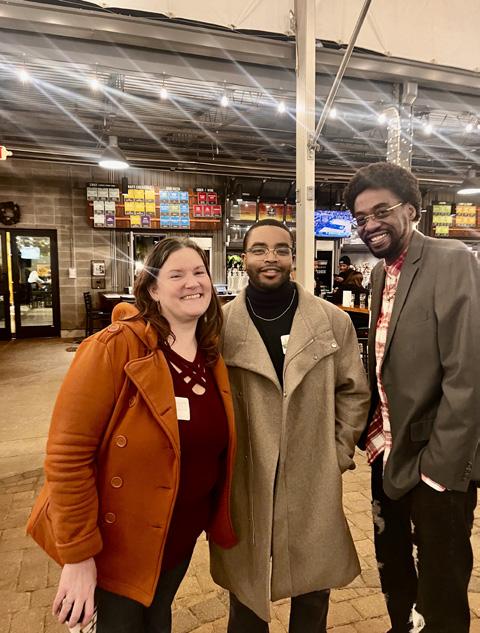




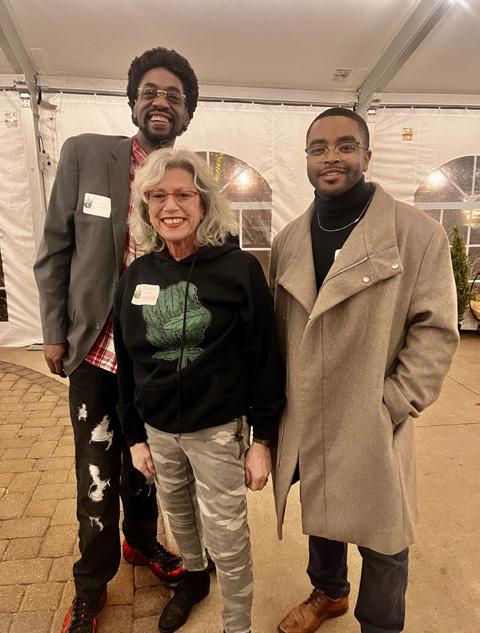
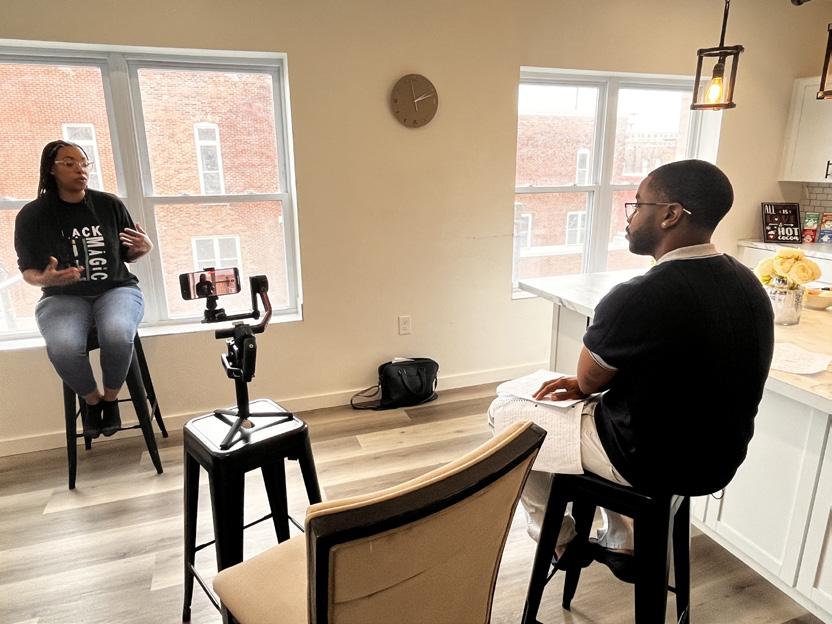






COLLAB WITH US





